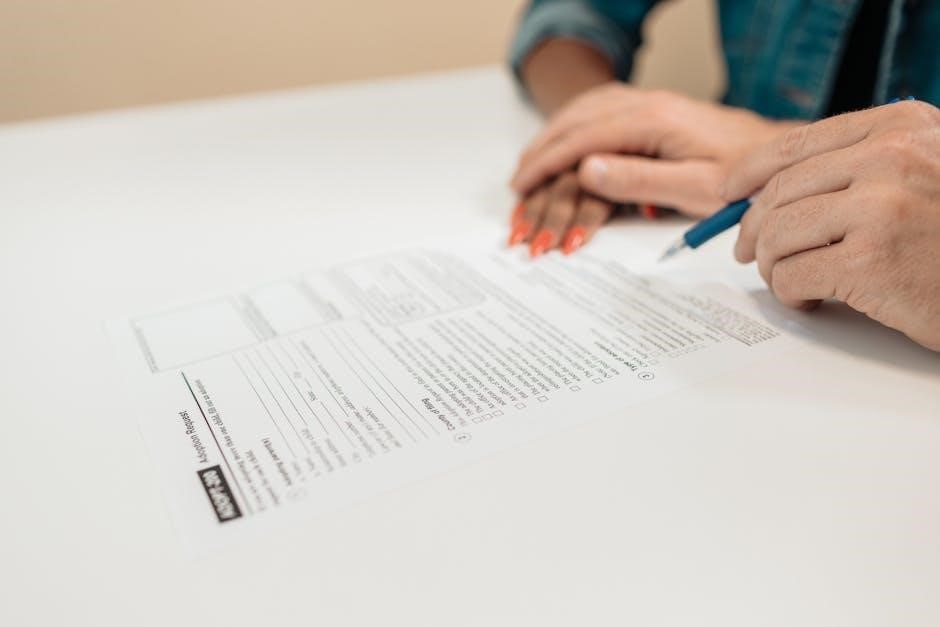Stolen Generation Application Form QLD: A Comprehensive Guide
Navigating the complexities of seeking redress for Stolen Generations survivors in Queensland can be daunting. This guide provides an overview of available schemes, eligibility, and application processes, acknowledging Queensland’s lack of a dedicated redress scheme.
Understanding the Stolen Generations
The term “Stolen Generations” refers to Aboriginal and Torres Strait Islander people who were forcibly removed from their families and communities in Australia, primarily between 1900 and 1972. These removals were carried out by government agencies, churches, and missions under various policies of assimilation. The impact of these policies has been devastating, leading to intergenerational trauma, loss of culture, language, and identity.
Understanding this history is crucial when navigating redress schemes. Survivors often face emotional and practical challenges in seeking compensation and support. The legacy of the Stolen Generations continues to affect Aboriginal and Torres Strait Islander communities today, highlighting the importance of acknowledging past injustices and providing pathways to healing. Several support services exist to assist survivors in understanding their rights and accessing available resources, acknowledging the historical context and ongoing trauma.
The Historical Context in Queensland
Queensland’s history regarding the Stolen Generations is particularly significant. Shockingly, Queensland is one of the two states, along with Western Australia, that has not established a dedicated redress scheme for Stolen Generations survivors. Despite having a substantial population of survivors, Queensland has yet to offer state-based compensation or reparations.
The absence of a Queensland-specific scheme means that survivors in this state must explore alternative avenues for redress, such as the Territories Stolen Generations Redress Scheme or the National Redress Scheme, if eligible. Understanding the historical context in Queensland underscores the challenges faced by survivors in accessing recognition and support for the harm caused by past policies. It is crucial to advocate for equitable treatment and ensure that Queensland survivors have access to the same opportunities for healing and reconciliation as those in other states and territories.

Current Redress Schemes and Compensation
Exploring current redress schemes reveals options for Stolen Generations survivors. These include the Territories Stolen Generations Redress Scheme and the National Redress Scheme. Eligibility criteria and application processes vary, impacting access to compensation and support.
Queensland’s Lack of a Dedicated Redress Scheme
Queensland stands out as one of the few states in Australia without a dedicated redress scheme for Stolen Generations survivors. This absence creates a significant disparity, especially considering that Queensland is home to a substantial population of survivors. The lack of a specific scheme in Queensland means that survivors often need to explore alternative pathways for seeking acknowledgment, compensation, and support.
The absence of a dedicated scheme in Queensland has drawn criticism from advocates and organizations who emphasize the urgent need for the state to address the historical injustices suffered by the Stolen Generations. This situation forces survivors to navigate complex systems.
The absence of a dedicated pathway in Queensland contrasts with the efforts made by other states and territories to provide redress. Survivors are limited in accessing any redress. The absence of a specific scheme affects healing.
Territories Stolen Generations Redress Scheme
The Territories Stolen Generations Redress Scheme offers a financial and wellbeing package for Stolen Generations survivors who were removed as children from their families or communities in the Northern Territory, the Australian Capital Territory, or the Jervis Bay Territory before self-government. This scheme recognizes the harm caused by these removals. The scheme aims to assist with healing.
The Redress Scheme was announced in August 2021 to support Stolen Generations survivors. It provides payments to recognize the harm caused by removal from family or community. The process aims to be accessible and stress-free.
The scheme will be open for applications from 1 March 2022 to 28 February 2026; Families of any Stolen Generations survivors who passed away between August 5, 2021 and March 1, 2022 will also be able to submit an application on the survivors behalf. More information and the application form are available from Territories Redress: https://territoriesredress.gov.au/resources.
Eligibility Criteria for Territories Redress Scheme
To be eligible for the Territories Stolen Generations Redress Scheme, applicants must meet specific criteria. Firstly, the applicant must be a person of Aboriginal or Torres Strait Islander descent, or both, who is a Stolen Generations survivor. Secondly, the removal must have occurred when the applicant was under 18 years of age. The removal must have been carried out by government or non-government agencies.
These agencies include police, churches and missions, or welfare agencies. Crucially, the removal must have taken place while the applicant was living in the Northern Territory, the Australian Capital Territory, or the Jervis Bay Territory prior to self-government. The Territories Stolen Generations Redress Scheme makes payments in recognition of the harm caused by removal from family or community.
To find out if you are eligible, please contact email protected or call 1800 566 111.
Application Deadline for Territories Redress Scheme
It is crucial to be aware of the application deadline for the Territories Stolen Generations Redress Scheme. Applications are currently open and will remain open until February 28, 2026. This deadline provides a defined timeframe for eligible individuals to submit their applications for consideration under the scheme. Potential applicants are encouraged to gather all necessary documentation and information well in advance of the closing date.
Submitting an application before the deadline ensures that the survivor’s claim is properly assessed. Families of any Stolen Generations survivors who pass away between August 5, 2021 and March 1, 2022 will also be able to submit an application on the survivors behalf. For any assistance or clarification regarding the application process or eligibility criteria, it is recommended to contact the dedicated support services. The Scheme will be open for applications from 1 March 2022 to 28 February 2026.
National Redress Scheme and Queensland
While Queensland lacks a dedicated Stolen Generations redress scheme, the National Redress Scheme may offer an avenue for some survivors. This scheme primarily addresses institutional child sexual abuse, and its applicability to Stolen Generations cases in Queensland depends on the specific circumstances of the removal and subsequent experiences of the individual.
It’s important to carefully review the eligibility criteria for the National Redress Scheme to determine if your situation qualifies. Factors such as the involvement of institutions covered by the scheme and the nature of abuse experienced play a significant role. Shine Lawyers team of expert class action lawyers have launched a class action against Northern Territory Stolen Generations. Click here to find out if you can join and more info.
For Queensland survivors, it is advised to seek legal counsel or consult with support services specializing in Stolen Generations cases.

Who Can Apply for Redress (General Eligibility)
Generally, to apply for Stolen Generations redress, individuals must be of Aboriginal and/or Torres Strait Islander descent, a survivor of the Stolen Generations, and removed before the age of 18.
Aboriginal and/or Torres Strait Islander Descent
A fundamental criterion for Stolen Generations redress schemes is that the applicant must be of Aboriginal and/or Torres Strait Islander descent. This requirement acknowledges the historical context of these schemes, which are designed to address the injustices inflicted upon Aboriginal and Torres Strait Islander peoples through forced removal from their families and communities. Establishing descent often involves providing documentation or evidence that demonstrates ancestry tracing back to Aboriginal or Torres Strait Islander heritage.
This may include birth certificates, family records, or statutory declarations from community elders. The specific requirements for proving descent can vary depending on the particular redress scheme being applied for, so it’s essential to consult the scheme’s guidelines for detailed information. The emphasis on Aboriginal and/or Torres Strait Islander descent underscores the unique position of these communities in relation to the Stolen Generations and the need for targeted redress measures.
Survivor of the Stolen Generations
To qualify for Stolen Generations redress, an applicant must be a survivor of the Stolen Generations. This means the individual must have been forcibly removed from their family and community as a child, as part of historical policies and practices that targeted Aboriginal and Torres Strait Islander children. The removal must have occurred under circumstances that align with the definition of the Stolen Generations, involving government or non-government agencies, including police, churches, and welfare organizations.
Proving that one is a survivor often involves providing evidence of the removal, such as records from institutions, government files, or personal testimonies. Oral histories and community knowledge can also be crucial in establishing survivor status. The experience of forced removal must have resulted in significant trauma and suffering, which is a central consideration in the assessment of applications for redress. Being recognized as a survivor acknowledges the profound impact of these policies.
Removal Occurred Before a Certain Age (Under 18)

A crucial criterion for Stolen Generations redress schemes is that the removal from family and community must have occurred while the individual was under the age of 18. This age restriction reflects the vulnerability of children and the devastating impact of forced removal during formative years. The schemes aim to address the trauma experienced by those who were taken from their families during childhood.
This age limit is consistently applied across various redress schemes, including the Territories Stolen Generations Redress Scheme. Applicants must demonstrate they were under 18 at the time of their removal. This can be proven through birth certificates, school records, or other official documentation. In cases where such documentation is unavailable, statutory declarations or oral testimonies may be considered to verify the applicant’s age at the time of removal. The focus is on providing redress to those whose childhoods were disrupted by these unjust policies.

How to Apply and Where to Find the Application Form
While Queensland lacks its own scheme, explore the Territories Stolen Generations Redress Scheme. Application forms and information are available on the Territories Redress website until February 28, 2026.
Contact Information and Support Services
Navigating the redress process can be emotionally challenging. Several support services are available to assist Stolen Generations survivors throughout the application process. For the Territories Stolen Generations Redress Scheme, contact 1800 566 111 or email territoriesredress.gov.au to determine eligibility and for assistance with the application. Remember applications for the Territories Stolen Generations Redress Scheme are open until February 28, 2026.
Additionally, organizations like Shine Lawyers may offer guidance. Note that a class action is investigating discriminatory practices against First Nations families. Reach out to the National Indigenous Australians Agency for broader support and counselling services. Seek confidential information from 1300 224 636 or 1800 737 732.
These services aim to make the process accessible and stress-free, acknowledging the trauma associated with the Stolen Generations. Healing and wellbeing are paramount, and these resources are dedicated to supporting survivors and their families through this journey, providing assistance for trauma and unique aged care needs.
Leave a Reply
You must be logged in to post a comment.